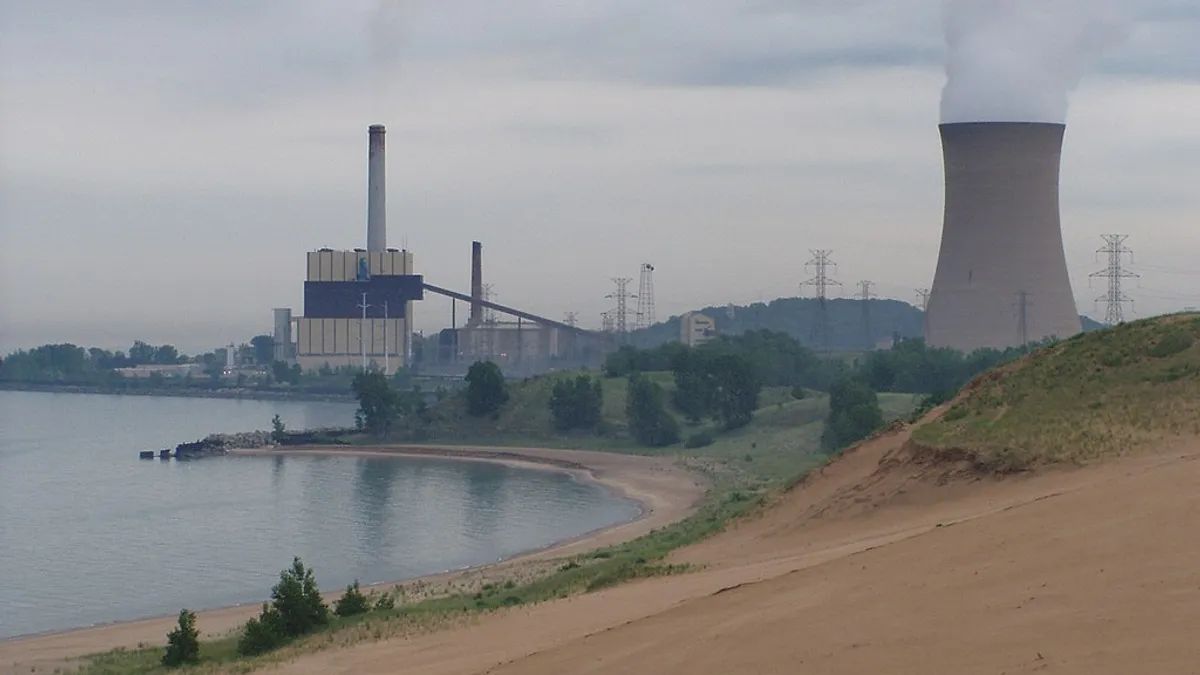Dive Brief:
-
Building renewable energy resources in Indiana is cheaper than keeping existing coal plants open, according to new plans from one utility in the state.
-
Last week, Northern Indiana Public Service Co. (NIPSCO) presented analysis for its 2018 Integrated Resource Plan (IRP), finding it can save customers more than $4 billion over 30 years by moving from 65% coal today to 15% coal in 2023 and eliminating the resource by 2028.
-
To replace retiring coal, NIPSCO found that a portfolio of solar, storage, wind and demand management is the most cost effective, along with a small amount of market purchases from the Midcontinent ISO. The utility will file its IRP on Oct. 31.
Dive Insight:
NIPSCO's upcoming IRP is more evidence that coal generation is steadily declining in the U.S. despite efforts from the Trump administration to save it.
In Indiana, as elsewhere, the issue is economics. The youngest generating units at NIPSCO's 1900 MW Schahfer plant were built in the mid 1980s, and the utility's analysis found that keeping them on the system would be more expensive than replacing them with new wind, solar and batteries.
NIPSCO's current preferred resource plan — Scenario 6 below — would see it retire all four units of the Schahfer plant in 2023 and the last coal unit at its Michigan City plant in 2028.
Eliminating coal from its portfolio would actually be the cheapest option, NIPSCO reported. Taking all the Schahfer and Michigan City units offline by 2023 — Scenario 8 above — was the lowest cost resource plan, but it presented "unacceptable" reliability risks to the utility.
Coal's inability to compete persisted even when NIPSCO modeled scenarios friendly to the resource. At the request of the Indiana Coal Council, a trade group, the utility analyzed a situation with high natural gas prices, no price on carbon, and a flat fee for delivered coal.
In that scenario, retiring coal faster was still cheaper than keeping it around, and the least cost plan was still more expensive to consumers than NIPSCO's preferred scenario.
To replace the retiring coal, NIPSCO plans to propose a mix of 1,500 MW of solar and storage, 150 MW of wind, 125 MW of efficiency and demand-side management and 50 MW of market purchases by 2028, shown in Scenario F below. The plans are based on renewable energy prices NIPSCO received in response to a request for proposals (RFP) earlier this year.
Adding those renewables was also cheaper than building natural gas plants or converting coal facilities to gas, NIPSCO found.
"Across all scenarios, converting both Unit 17 and 18 [of Schahfer] would cost NIPSCO customers between $540 [million] to $1.04 [billion] more than retirement and replacement with economically optimized resource selections from the RFP results," the utility reported.
NIPSCO's upcoming IRP represents an acceleration in its move away from coal and toward renewables. In 2016, the utility announced it would retire two units at the Schahfer plant by 2023, but planned to keep the other units open years into the future.
The utility's plan would also significantly reduce its carbon emissions. The Schahfer plant emitted more than 8.2 million pounds of carbon dioxide in 2014, making it one of the nation's worst polluters, but NIPSCO says its replacement plan would reduce the utility's total emissions to less than 1 million pounds annually.
The utility will submit its IRP to Indiana regulators at the end of the month. State regulators do not issue comments or approve the final IRP, but the plan will be subject to public comment.
Correction: This post has been updated to reflect that Indiana regulators do not approve IRP plans in the state.














